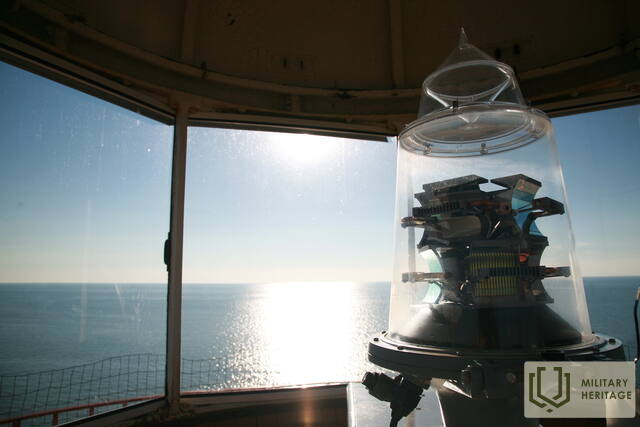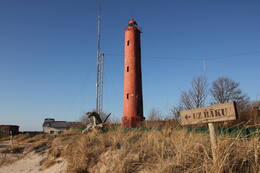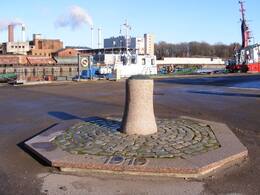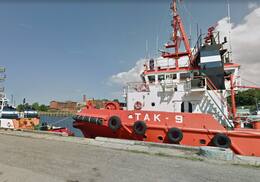Neem ja laev Saratov
Võib oletada, et Liepaja oli lühikest aega Läti pealinn, sest vabadusvõitluse ajal asus ajutine valitsus laeval Saratov just selles linnas. Saratov viis pärast vabanemist Ajutise Valitsuse Riiga, kuid paljud inimesed ei tea, et sellise meie jaoks olulise laeva ajalugu lõppes merel Akmenragis.
Tuntuim laev, mis siin Cabo Verde kivisel parvel jooksis ja siia igaveseks jäi, on aurik Saratov. See laev on meie riigi jaoks ajalooliselt oluline selle poolest, et vabadusvõitluste ajal oli Läti Ajutine Valitsus koos Kārlis Ulmanisega eesotsas ja just see laev viis Ajutise Valitsuse vabastatud Riiga.
Saratov ehitati Taanis 1888. aastal ja läks esimest korda merele nimega Leopold II. 1911. aastal ostis laeva Venemaa loodelaevandusettevõte ja nimetas selle ümber Saratoviks. Liepājast saab laeva registreerimissadam, kust laev teeb regulaarseid reise Suurbritanniasse. Esimese maailmasõja ajal vahetas laev mitu korda omanikku, kuni Läti tagastas selle pärast rahulepingu allkirjastamist NSV Liidus. Viimasel reisil läks laev Suurbritanniasse, kuid teel pidi ta naasma Liepajasse, et Läti meremehi vabastada. Laeval oli juba mehitatud Nõukogude Liidu meeskond ja kapten, Läti meremehed olid vaid selle reisijad.
14. jaanuaril 1923 nägid Pāvilosta kalurid kaldalt aurikut, mis läks küll Liepājas suunas, kuid läks kaldale liiga lähedale. Kalamehed kavatsevad endiselt, et kui nad seda teevad, jääb laev Akmeņragsi kaldale ... Läti meremehed pardal hoiatavad tüürimeest ohu eest, sest Akmeņragsi tuletorn on juba selgesti nähtav ja meri on sel ajal rahulik. Roolimees keeldub kapteni teadmata kurssi muutmast, kuid kapten sööb sel ajal lõunat. Kui see lõpuks roolikambrisse jõuab, lööb laeva kere juba kaldakive ja päästmiseks on hilja ... Liepajast saabuvad päästetõmbed, kuid algab torm ja lumetorm, kuid nad ei suuda laeva kaldalt maha võtta. . Teisel hommikul õnnestub päästepaadil Akmeņrags tormist hoolimata merel käies kaks korda pardalolnuid päästa. Lained ja tormid puhastavad laeva, kuid kere kahjustused on liiga suured ja laev upub sinna. Veel 1933. aastal olid laeva korsten ja mast vee kohal, hiljem laev lasti osaliselt õhku ja sealt tuli metalli Liepājas traadivabrikusse. Ometi on Akmeņrags sellest laevast ka oma osa saanud, osa selle vrakist on endiselt merepõhjas. Räägitakse, et laeva tüürimees, pärast NSV Liitu naasmist, mõisteti kohut ja mõisteti selle saatusliku navigatsioonivea eest surma. Laevakapteni edasise karjääri kohta andmed puuduvad.
NSV Liidu ajal ehitati ja paigaldati Akmeņragsi tuletorni juurde osa Nõukogude armee piirivalvest.
Ajakiri Jūrnieks
Seotud ajajoon
Seotud teemad
Seotud objektid
Akmeņragsi tuletorn ja "Saratovi" saatus
Akmeņragsi tuletorn asub Saka vallas, Pāvilostast 10 kilomeetrit edelas. Majaka tippu viib keerdtrepp ning sealt avaneb vaade merele ja ümbritsevatele metsadele. Praegune 37 meetri kõrgune tuletorn ehitati 1921. aastal. Eelmine tuletorn hävis Esimese maailmasõja ajal.
Akmeņragsi tuletorn paistab teiste Läti tuletornide seast silma, sest see asub ühes meresõidu jaoks kõige ohtlikumas kohas kogu Läänemere rannikul. Majaka tuli tähistab umbes kahe meremiili ehk 3,7 km pikkust kivist madalikku, mis loode suunas merre ulatub. Selles madalikus on meri vaid veidi üle kahe meetri sügav. Majaka asukoht on jäänud endiseks, kuid rannajoon on aastate jooksul taandunud. Kuigi navigatsioonituli on siin olnud alates 1879. aastast, on Akmeņrags olnud tunnistajaks mitmele laevahukule. Nendest tuntuim on Läti aurulaeva Saratow madalikule jooksmine 1923. aasta septembris. 1919. aastal asus Saratowil lühikest aega Läti Ajutine Valitsus. Akmeņragsis asus varem piirivalvekordon ja siin võib näha endiseid Nõukogude sõjaväehooneid.
Laeva "Saratov" kai Liepajas
"Saratovi" kai asub Liepajas, Vanasadama 59, paadisadamate lähedal.
Laev ehitati 1888. aastal Kopenhaagenis Buvmeistar & Waini laevatehases "Leopold II" nime all. 1911. aastal ostis selle aktsiaselts Russian North-West Shipping ja nimetas selle ümber "Saratoviks", laeva kapteniks sai lätlane Aleksandrs Remess.
Mais 1915, kui Liepaja okupeeriti Saksa vägede poolt, oli "Saratov" sadamas kahjustatud seisus.
10. jaanuaril 1919 võttis aurulaev Saratovi üle Läti Ajutine Valitsus. Aprillist kuni juulini 1919, pärast "16. aprilli riigipööret", viibis K. Ulmanise juhitud Ajutine Valitsus Saratovi pardal ja oli sunnitud põgenema liitlaste laevastiku kaitse alla.
8. juulil 1919, pärast K. Ulmanise ajutise valitsuse üleandmist Riiasse, kasutati aurulaevu Riia, Ventspilsi ja Liepaja vaheliseks liikluseks.
Läti ja Nõukogude Venemaa vahelise 11. augusti 1920. aasta rahulepingu tingimuste kohaselt tuli aurulaev Saratov tagastada Nõukogude poolele. 2. jaanuaril 1923 anti aurulaev üle Nõukogude Venemaa esindajale. 15. jaanuaril 1923 hukkus aurulaev "Saratov" Akmenragi lähedal.
1936. aastal müüs Läti merendusosakond vraki ettevõttele, kes lammutas selle ja andis selle üle Liepaja riidevabriku käsutusse.
Laeva "Saratov" päris kai.
Laeva "Saratov" päris kai asub Liepājas, Vecā ostmala 59 paadikaidade lähedal, mälestusmärk aga Liepaja erimajandustsooni vahetus läheduses.
Ehitatud 1888. aastal Kopenhaagenis "Buvmeistar & Wain" laevatehases "Leopold II" nime all.1911. 2010. aastal ostis selle aktsiaselts Russian North-West Shipping ja sai uueks nimeks "Saratov", laeva kapteniks sai lätlane Aleksandrs Remes.
1915. aasta mais, kui Saksa väed Liepaja okupeerisid, oli "Saratov" sadamas kannatada saanud.
10. jaanuaril 1919 läks aurulaev "Saratov" Läti Ajutise Valitsuse valdusse. Aprillist 1919 juulini 1919 laeval "Saratov" pärast "16. aprilliputši” oli K. Ulmanise juhitud Ajutine Valitsus, mis oli sunnitud end päästma liitlaste laevastiku kaitse all.
8. juulil 1919, pärast K. Ulmanise Ajutise Valitsuse toomist Riiga, hakati aurikut kasutama Riia, Ventspilsi ja Liepāja vahelises liikluses.
11. augusti 1920. aasta Läti ja Nõukogude Venemaa vahel sõlmitud rahulepingu tingimuste kohaselt tuli aurik "Saratov" tagastada Nõukogude poolele. 2. jaanuaril 1923 anti aurikud üle Nõukogude Venemaa esindajale. 15. jaanuaril 1923 hukkus Akmeņraga lähedal aurik "Saratov".
1936. aastal müüs Läti merendusamet laevavraki ettevõttele, kes päästis selle ja toimetas vanarauaks Liepāja laevatehasesse.








